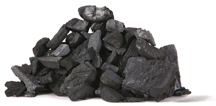
Jul 26, 2016
Moisture, volatile matter and ash are three of the primary parameters used for assessing the quality of coal. A new ASTM standard that covers the use of a macro thermogravimetric analyzer for the determination of moisture, volatile matter and ash in the analysis of coal and coke samples has recently been approved by ASTM International Committee D05 on Coal and Coke.
D7582, Test Methods for Proximate Analysis of Coal and Coke by Macro Thermogravimetric Analysis, was developed by Subcommittee D05.21 on Methods of Analysis.
According to John T. Riley, Ph.D., professor emeritus, Western Kentucky University, and chairman, Committee D05, in addition to determining moisture content, values derived from moisture tests are also used to calculate other analytical test results to different bases as specified in contracts. As well as estimating the amount of ash remaining after combustion, the ash values determined in the laboratory are used as quality control parameters for coal sampling and coal washing operations.
Riley says that the first macro thermogravimetric systems (for samples of a gram or more) were introduced in the early 1980s, but there have now been four generations of developments and improvements since the earliest systems. D7582 reflects the most recent developments in technology regarding macro TGA systems.
"It is estimated that at least half the labs in the United States use macro TGA systems to run moisture, volatile matter and ash tests," says Riley. "Therefore, D7582 will have an impact on half of the coal labs in the U.S. and a similar effect on coal labs around the world."
Riley notes that the following accomplishments have been realized with the development of D7582:
- The first precision statements for 1) the proximate analysis of coke alone and separate from coal, 2) drying coals in air versus drying in nitrogen and 3) instrumental determination of volatile matter for different ranks of coal;
- Identification of bias for ashing coals in different procedures;
- Identification of bias for drying coals in air versus drying in nitrogen;
- Identification of bias for volatile matter determination using different heating rates;
- Revelation of the absence of biases in other procedures involving the determination of moisture, ash and volatile matter; and
- Development of calibration procedures for dealing with apparent biases.
To purchase ASTM International standards, visit www.astm.org and search by the standard designation number, or contact ASTM Customer Relations (phone: 610-832-9585).
bgrileys@insightbb.comScott Orthey
March / April 2010
028